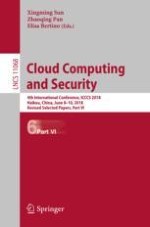2018 | OriginalPaper | Chapter
An Adaptive Construction Test Method Based on Geometric Calculation for Linearly Separable Problems
Authors : Shuiming Zhong, Xiaoxiang Lu, Meng Li, Chengguang Liu, Yong Cheng, Victor S. Sheng
Published in: Cloud Computing and Security
Publisher: Springer International Publishing
Activate our intelligent search to find suitable subject content or patents.
Select sections of text to find matching patents with Artificial Intelligence. powered by
Select sections of text to find additional relevant content using AI-assisted search. powered by
